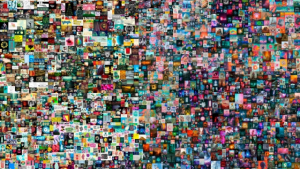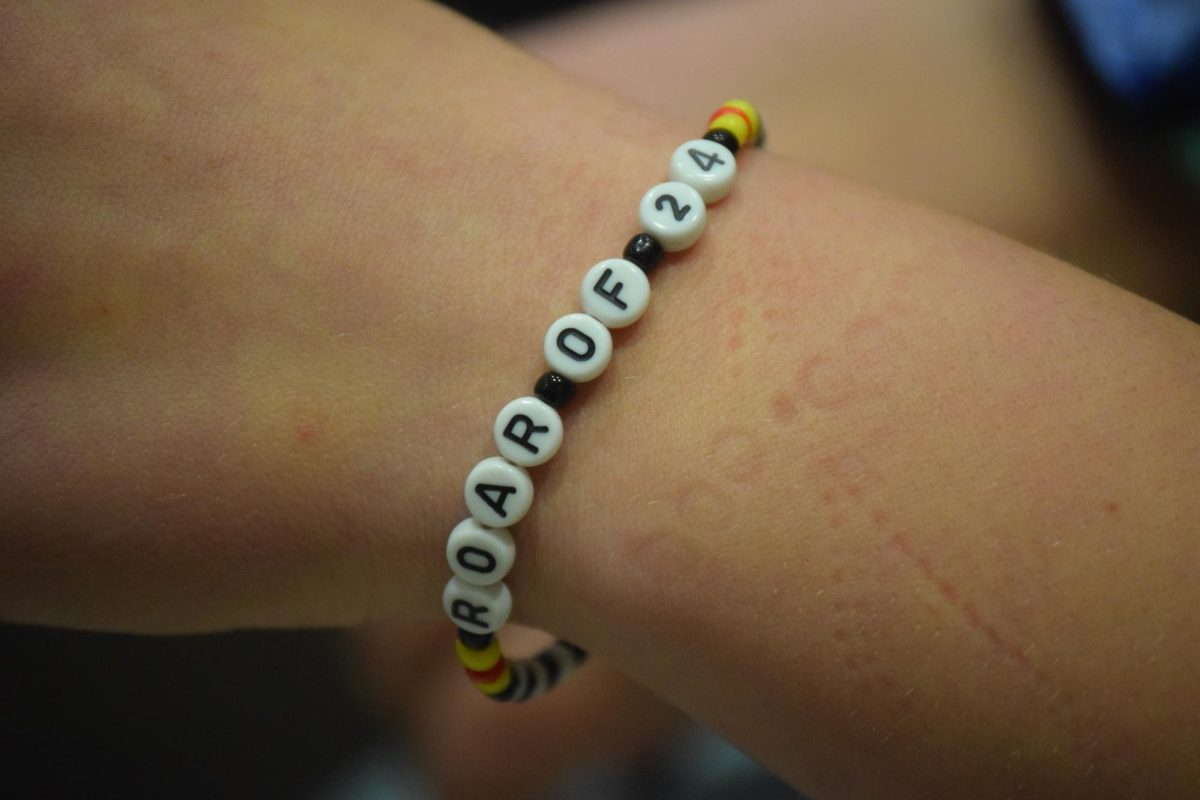In spite of the craze, NFTs remain questionable investments
Graphic by the Fishers N the Red staff.
The growing popularity of NFTs, while certainly intriguing, is unsustainable and a risky investment.
May 11, 2021
Recently, the emerging popularity of NFTs, or non-fungible tokens, has grabbed headlines worldwide. Essentially, an NFT is a sort of digital asset that carries with it the rights to ownership, known as a “token,” of the original, exclusive copy. This could include videos, photos, digital art, music or virtually any digital possession. The fascination with these intangible, “irreplaceable” items is interesting, albeit rather confusing.
The most expensive NFT in history was sold in March of this year, with Mike Winkelmann’s digital art piece selling for $69.3 million at auction. Videos of LeBron James dunking, drawings of cats, animated GIFs and many more seemingly random or relatively pointless virtual items have sold for thousands or hundreds of thousands of dollars online. Although many are still skeptical of the actual value of NFTs, the emerging market for them is evidence that consumers are eager to pay high prices for an especially interesting GIF of a cat.

The appeal of NFTs, at least for artists, lies in the fact that they allow for a virtual, nontraditional venue for the selling of artwork that may otherwise lack a real market or fetch smaller sales prices. Artists, video creators, celebrities or anyone with a marketable digital item are able to sell these tokens in an unconventional manner that nonetheless has proved to be lucrative. This could be an unwise investment, though, as the temporary popularity of NFTs makes the market extremely volatile. The selling of NFTs may be a risky business move, especially considering the possibility of an impending bust of the NFT market that many critics predict, but it is an understandable one due to growing attention and interest.
For consumers, however, the appeal of NFTs is far less evident. Unlike a Picasso painting or a game-work sports jersey, these items are completely intangible. Not only does this ensure that copies can be made and viewed – Winkelmann’s $69.3 million piece can be viewed with a simple Google search – but it also creates a warped sense of value where ownership alone is valued above all else. Those who pay the high-ticket prices for NFT artwork would argue that it is adjacent to collecting fine art, but when so many can have exact copies of the artwork, it becomes more similar in nature to trading cards. Owning an NFT may be appealing to some, but it must be understood that, unlike traditional art, the price is derived solely from the ownership of the item, not necessarily the material possession of the work.
While many see NFTs as the next cryptocurrency, the future of virtual collectibles and a worthwhile market to invest in, the appeal is lost on a large majority of the population that would rather spend their money on tangible possessions. Although NFTs are certainly intriguing virtual assets, their future and appeal is too unknown to warrant the widespread investment that has been seen recently.









